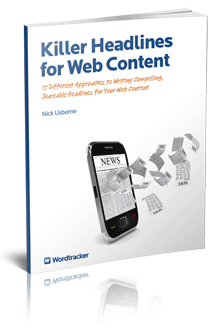15 Different Approaches to Writing Compelling, Shareable Headlines for Your Web Content.
 When writing web content, how much time do you spend on the headlines?
When writing web content, how much time do you spend on the headlines?
And I’m not talking about simply optimizing those headlines for keywords.
Certainly SEO is part of the equation. But there other key factors you need to consider.
– How well do your headlines hook your readers?
– How shareable are your headlines through social media?
– How well do your headlines turn scanners into readers?
– How well do your headlines stand alone in RSS feeds and on social bookmarking sites?
Headline writers face challenges that just weren’t around a few years ago. For example, if your web content page headline is published on Twitter, how powerfully does it command attention, and how likely is it to drive retweeting?
(On a practical point, are your headlines short enough to be retweeted and commented on in Twitter?)
Headline writing is an old craft, well understood by copy editors working for print newspapers and magazines. But on the web, with the exception of sales copywriters, writers tend to rush their headlines. They make them descriptive, certainly. They also optimize them for SEO.
But today, you need to do more than that. Your content headlines have to compel interest, hook your readers, drive readers down into the body text and – perhaps most important of all – they have to be shareable through social media.
In my new ebook, Killer Headlines for Web Content, I explore 15 different approaches to writing great headlines for content, and share 3 proven examples for each approach.
That’s 45 examples – all of them winners – and all of which can spark strong ideas for your own web content headlines.
Killer Headlines for Web Content is published by Wordtracker…learn more here…
